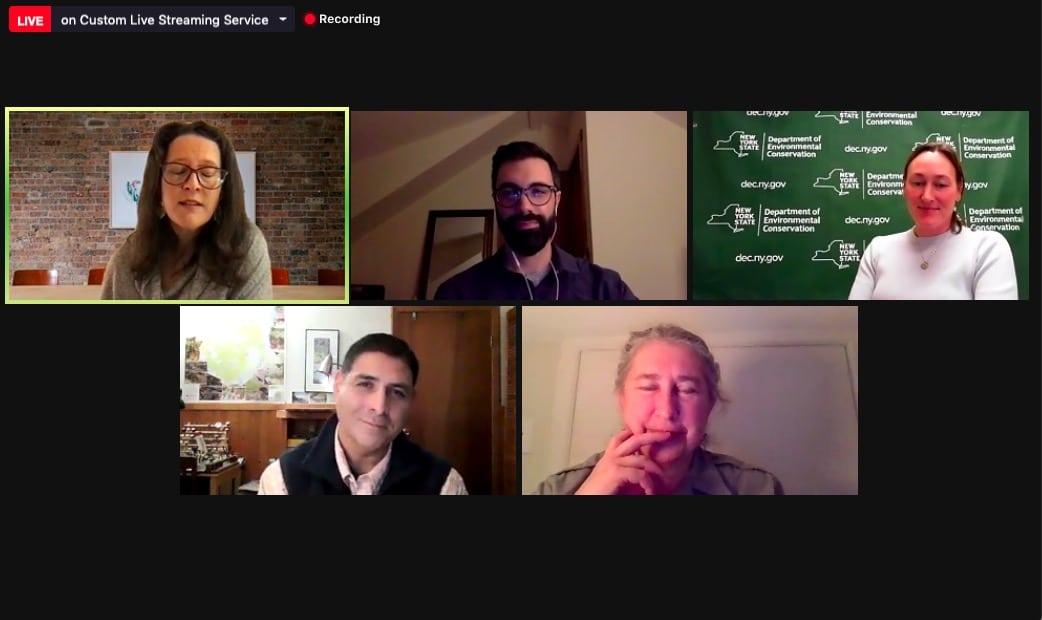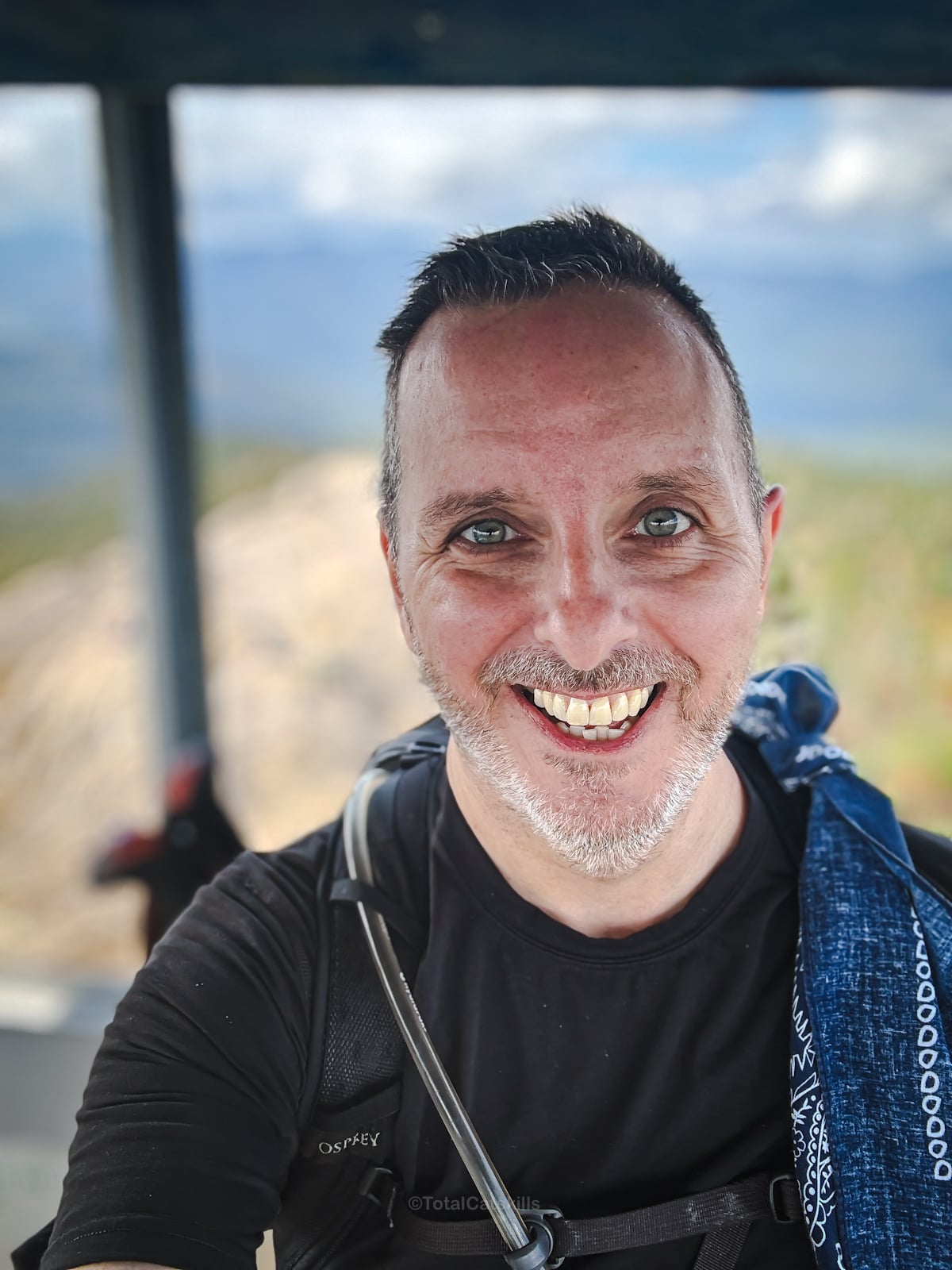Disclosure: This content may contain affiliate links. Read my disclosure policy.
This excellent webinar was hosted by Catskill Mountainkeeper and included expert panelists from the Catskill Center, the Adirondack Council, the National Parks Service, and the DEP.
Thousands of visitors traveled to the Catskills and Adirondacks this past summer but many discovered “hot spots” littered with trash and overrun with people. Several participants made the point that these are, in one sense, good problems to have. More people wanting access to nature and the wilderness is a net positive.
If it can be properly supported.
I joined the webinar late but still got a lot from it.
Complexity
The process of mitigating overuse is extremely complicated.
For example, the Catskill Park is made up of many different parcels of land, each of which has a different legal designation.
If you look at the NYNJ Trail Conference maps, you’ll see five different shades of green. These represent wilderness, wild forest, intensive use, and DEP land permit/no-permit required. “Wilderness” is the most restrictive designation, where the law enforces the smallest human footprint possible.
Each of these land types are governed by different legislation: some at the local level, some at the state level, some at the State Constitution level. These lands (some of them anyway) are forever wild.
What all this means, practically, is that solutions that present themselves as obvious for addressing an issue on one parcel will be illegal on an adjoining parcel — which, technically, may only be inches away. This extends even to the kinds of tools allowed on each land type.
There is no “one size fits all” solution.
Each area is unique and every issue has to be dealt with separately. Considering the interplay between the laws and agencies involved in managing New York’s Parks, the fact we have such a great trail system in the first place is a remarkable achievement.
Solutions? Hold up…
The solutions to overcrowding, littering and overuse are part logistical, part environmental and part political.
Take permits for example.
Should we introduce permits to the Catskills and Adirondack Parks? Some are calling for it. The numbers of visitors to both parks rocketed this summer, even though Canadians were locked out. But permit implementation is complex.
Should money change hands? If so, who does that lock out? Should only wealthy people have access to public land?
Aren’t there enough barriers to access already?
Even if no money changes hands, how are permits even applied for? Online would be most efficient, but that locks out many potential users. And automated ticketing systems can fill up in five minutes, which is problematic for more people and for planning.
Should visitors have to undergo informational training before they receive a permit? How is this instituted? How is it enforced? Are we grading exams now?
And how are permits enforced? Every agency is already woefully understaffed.
In some locations — the big National Parks, for example — access is often managed via a limited number of points of entry. This is not the case in the big New York Parks where there are hundreds of trailheads dispersed around the wilderness.
In any case, limiting numbers is broadly seen as the solution of last resort. If it can be avoided at all, no agency wants to do it.
Personally, I have no problem with the State employing more people to steward trailheads and trails. It seems like a solid use of tax dollars. But many people (and powerful lobbies) would oppose such an “obvious” improvement.
BTW, which party did you vote for in the last election? It makes a big difference to your parks…
Solutions!
The pilot program at Peekamoose Blue Hole was quite successful. Visitors now need to read some informational bullet points and signs, they are greeted by a steward who educates them even more, and overall numbers are limited. The system works well. Since its implementation, Blue Hole has seen far fewer environmental impacts.
Visitors often turn up to a location with no Plan B. With restricted parking this year, lots of Plans B were needed but very few visitors had ’em. Stewards at Blue Hole directed overflow visitors to other locations. Good for crowd control purposes, but not free from consequence. Not every trailhead is properly “hardened” to handle an influx of visitors. There are environmental impacts when driving visitors to any location.
No solution is perfect, but the perfect is the enemy of the good.
Even the successful permitting-and-dispersement system developed for Blue Hole won’t work everywhere. During peak season, there were 1-5 rangers at that trailhead. That’s just not possible at every trailhead.
Leave No Trace messaging is also seen as a successful part of mitigating overuse. Simple drip-drip-drip messaging by community leaders, organizations, and popular social media channels goes a long way to turning the public toward caring for our shared land.
Shuttle programs have caught the imagination of the governor’s office and the DEC, who continue to build on that momentum and work on resource allocation.
All in all, I was left with the impression of five smart agencies working on a complex issue — all stymied by a poverty of resource allocation.
What We Can Do
The panel identified five key to-dos that we mountain lovers can take up to improve the situation. By far the most important was to make noise about funding.
- Do Advocate: pressure local and State-level decision makers — tell your leaders that your Parks need more money, be the squeaky wheel
- Do Volunteer: give your time to organizations like the New York New Jersey Trail Conference — here’s their volunteer form
- Do Clean Up: when you find trash on the trail, do pick it up and do pack it out
- Do Educate: promote the Leave No Trace philosophy via your social media channels and personal networks
- Don’t Geotag: when posting to social media, follow LNT guidelines and only geotag a general area, never a specific location — e.g. Catskill Park rather than Peekamoose Blue Hole
Webinar Participants
This webinar was held October 22, 2020. Here is the source link at Catskill Mountainkeeper.
- Catskill Mountainkeeper: Katherine Nadeau
- Catskill Center: Andy Mossy
- ADK Council: Rocci Aguirre
- National Park Service: Ingrid Peterec
- NYS Department of Environmental Conservation: Katie Petronis


More excellent information: Sustainable Trail Design, Not Hiker Permits, is Necessary for Environmental Preservation in New York State’s Adirondack Park High Peaks — https://www.sciencepolicyjournal.org/article_1038126_jspg170111.html
This pie chart makes for an interesting read https://www.newyorkalmanack.com/2020/10/survey-high-peaks-hikers-seek-wildness-solitude-support-limits/